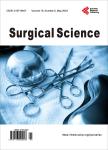An Analysis of War Weaponry Trauma Victims from a Medical College Setting in Kashmir Valley
An Analysis of War Weaponry Trauma Victims from a Medical College Setting in Kashmir Valley作者机构:Government Medical College Srinagar India
出 版 物:《Surgical Science》 (外科学(英文))
年 卷 期:2017年第8卷第1期
页 面:9-18页
学科分类:1002[医学-临床医学] 100214[医学-肿瘤学] 10[医学]
主 题:Abdominal Trauma Pattern Morbidity Mortality Management
摘 要:Background: Kashmir valley, being a known conflict zone keeps on receiving war victims due to scuffles between civilians and the government forces. Such upsurges have been noted in the recent past in 2008 and 2010;however, a new face of upheaval took place in the month of July 2016. Herein, we present an analysis of 500 abdominal trauma victims reported to our department at Government Medical College Srinagar, Kashmir, India. Methods: Government Medical College Srinagar Kashmir is a tertiary care teaching hospital situated in the heart of Kashmir valley. Being one of the referral hospitals, for trauma, we received a total figure of 6149 trauma victims out of which 500 were purely of abdominal in nature managed by the department of surgery. The study conducted was a short analysis of these abdominal trauma patients that reported from 8th July to 8th November 2016. Results: The result of analysis of 500 abdominal trauma patients is reported herein. The male female ratio of patients was 19.8:1 (male = 95.2%, female = 4.8%). The age range was from 5 years to 65 years with majority reported in the age range of 15 - 30 years. The number of bullet injuries was =85 and the pellet injuries were =349. The commonest organs involved were small intestines, spleen, large bowel and liver in descending order. Penetrating injuries were seen in =60.4%, non-penetrating were seen in =39.6%. The patients were grouped into conservative, non operative and operative group. The commonest morbidity observed was wound sepsis and a total mortality reached to a figure of 2%. Conclusion: This short study of analysis of trauma victims has explored the newer horizons of trauma management and we believe and conclude that specialized trauma hospitals with skilled manpower and modern gadgets of handling trauma is need of an hour especially in developing countries like ours.



